Installing Windows on an Xbox One APU: The Chuwi Aerobox Review
by Dr. Ian Cutress on December 24, 2020 9:45 AM ESTCPU Benchmarks, Power, Temperature, Noise
For office productivity, there’s no getting around the fact that these are Jaguar cores. Coupled with the memory bandwidth means that flicking between the basic documents can be somewhat laggy, and this isn’t really a system for anything other than email and web browsing. We still put it through our test suite, and the full range of tests were conducted. A few of them are highlighted here.
For reference, the Athlon 5370 mentioned here is a quad-core Jaguar.
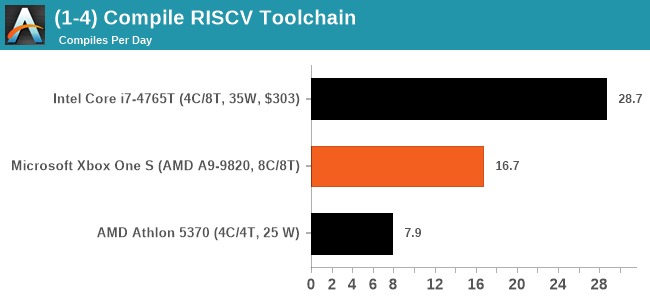
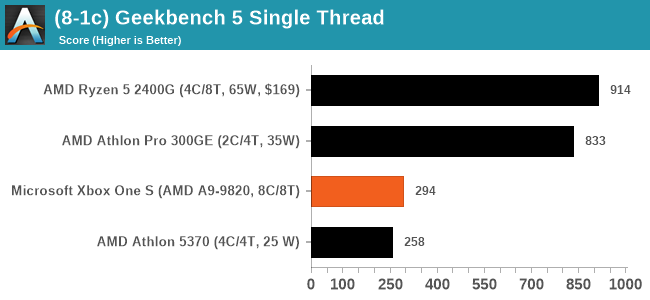

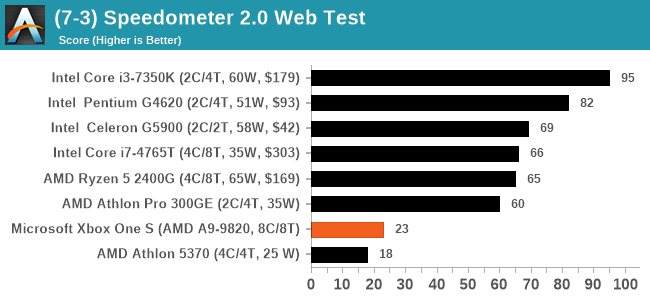
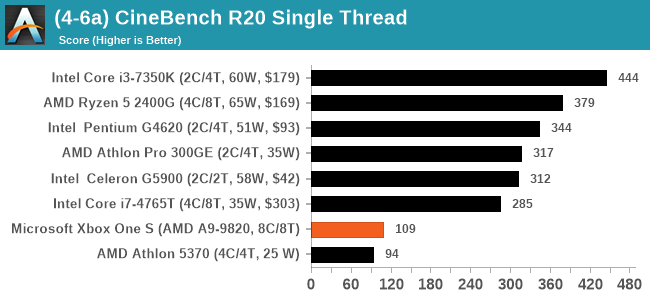
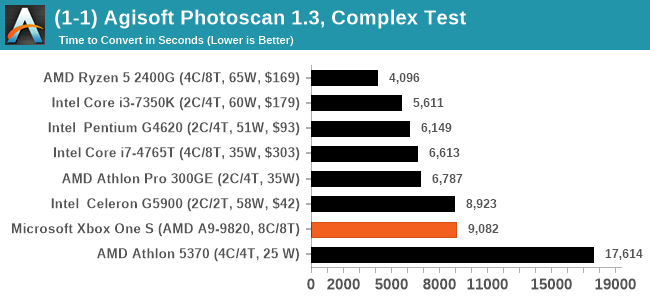

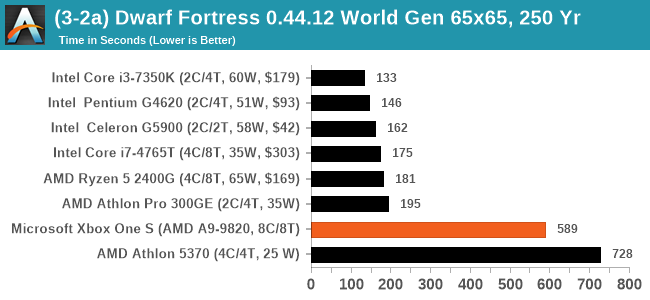

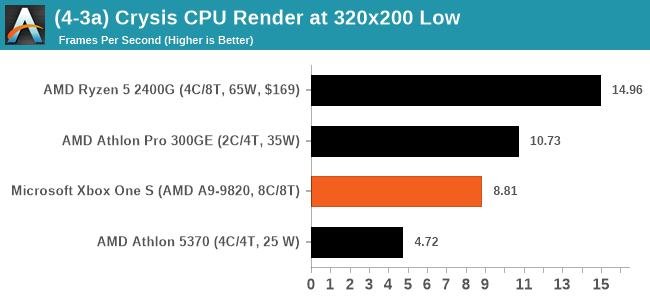
Power, Temperatures, Noise
I will say a few words on power and temperatures.
Our normal tools for extracting power do not work on this embedded processor, likely a function of its age (similar Jaguar desktop processors that were public have the same issue), however we were able to take some wall measurements.
At idle, we saw power consumption in the 65-70W range. This is fairly high for a HTPC, so we would suggest not leaving it turned on when not in use. During our Borderlands 3 gaming, the system power hit 150 W, which should actually be clipping the power supply that is only capable of 150 W. This may be a limiting factor in gaming performance as a result. During high CPU loading, the total system power only went up to 85 W or so, showcasing that the GPU is the key component here.
For temperatures, before we replaced the paste, the system would peak at 75ºC regardless of load, and still offer full CPU frequency. After applying our own paste, that dropped to the 62-68ºC range. All throughout, the fan on the cooler never ramped up enough to be noticeable at a distance of a couple of meters. The one time the system had an odd boot, the fan did spin to 100% and was very loud, but after rebooting it came back as normal.










101 Comments
View All Comments
azfacea - Thursday, December 24, 2020 - link
sounds like a solution w/- a problem. much more expensive than raspberry pi and other SBC for pretty much all things CPU . I guess it has more GPU but also way higher power and the GPU is nothing amazing in 2020. so whats the point ??Fulljack - Thursday, December 24, 2020 - link
it's literally for a niche market in Japan as the article has been statedbrucethemoose - Thursday, December 24, 2020 - link
Can y'all run some GPU compute benches?This could potentially be used as a nice budget renderfarm board, especially if the framebuffer can be bumped up. Also, I bet CPU <-> GPU transfers are pretty fast.
Glock24 - Thursday, December 24, 2020 - link
Can it use higher clocked DDR3 RAM? For example DDR3-1866?MrCommunistGen - Friday, December 25, 2020 - link
Yeah, I'd be really interested to see if performance increases appreciably using some faster RAM.I only have experience with two AMD APUs from this era, but both are in prebuilt system scavenged from my company's eWaste pile:
1. A cheapo Acer tower with an A10-7800 (Kaveri) which heavily throttles the CPU cores if there is any 3D load -- causing a CPU bottleneck in many cases. It shipped with DDR3-1600. I bought some Crucial JDEC spec'd DDR3L-1866 (no XMP profile required) to see if that'd help at all, but the system seems to be capped to 1600MHz despite the A10-7800 supporting DDR3-2133.
2. An even more cheapo HP "tower" which ended up being an empty box with an external power brick and a mobile A8-6410 (Beema) on an ITX motherboard. Despite Beema officially supporting DDR3L-1866, this machine is also capped to 1600MHz.
All of this is to say, I wouldn't at all be surprised that even if you paired the A9-9820 with faster DDR3 sticks it might not actually run at higher memory speeds.
boozed - Thursday, December 24, 2020 - link
Apologies in advance...RRRAARRWHHGWWR!
Bigos - Thursday, December 24, 2020 - link
Does it run Linux?abufrejoval - Thursday, December 24, 2020 - link
Android x86 should be fun to try!Oxford Guy - Thursday, December 24, 2020 - link
'Why console processors have never made it into the PC market before'?Because Jaguar has worse IPC than even Piledriver, right?
'At the time AMD had two CPU core designs that were worth some merit: Bulldozer cores, with its 1 core/2 backend design that has since been branded a large dumpster fire for the company, or Jaguar cores, aimed more for the low power/high efficiency market. Weighing in the performance target of this generation of consoles, both companies decided on having eight Jaguar cores.'
Or Jaguar cores, aimed at making more money for AMD because the die size is smaller -- not because the CPU is any better than Piledriver. On the contrary.
The parasitic 'consoles' drained life out of PC gaming with these terrible cores. There is no good reason to have two artificial x86 walled gardens in addition to the PC gaming platform. Yes, there are reasons but none of them outweigh the cost, from the point of view of the consumer rather than companies like Sony, MS, and AMD.
These "consoles" actually put AMD in the position of competing against the PC gaming platform. So much for the common unjustified belief that AMD is some kind of white knight on a horse, fighting the good fight for the PC gamer. Instead, the company was content to feed us Polaris, a weak design from the start designed to make money by keeping die size small, and lame GPUs like Radeon VI. The transistor count in that one is nothing to write home about. All the marveling about how much performance AMD has been able to get on 7nm since then generally neglects to mention that Radeon VI was not a high-performance design in the first place.
Alistair - Thursday, December 24, 2020 - link
Polaris is one of the best GPUs ever made. Relax. The CPU might have been bad but the GPUs in the PS4 and later Polaris were both great.